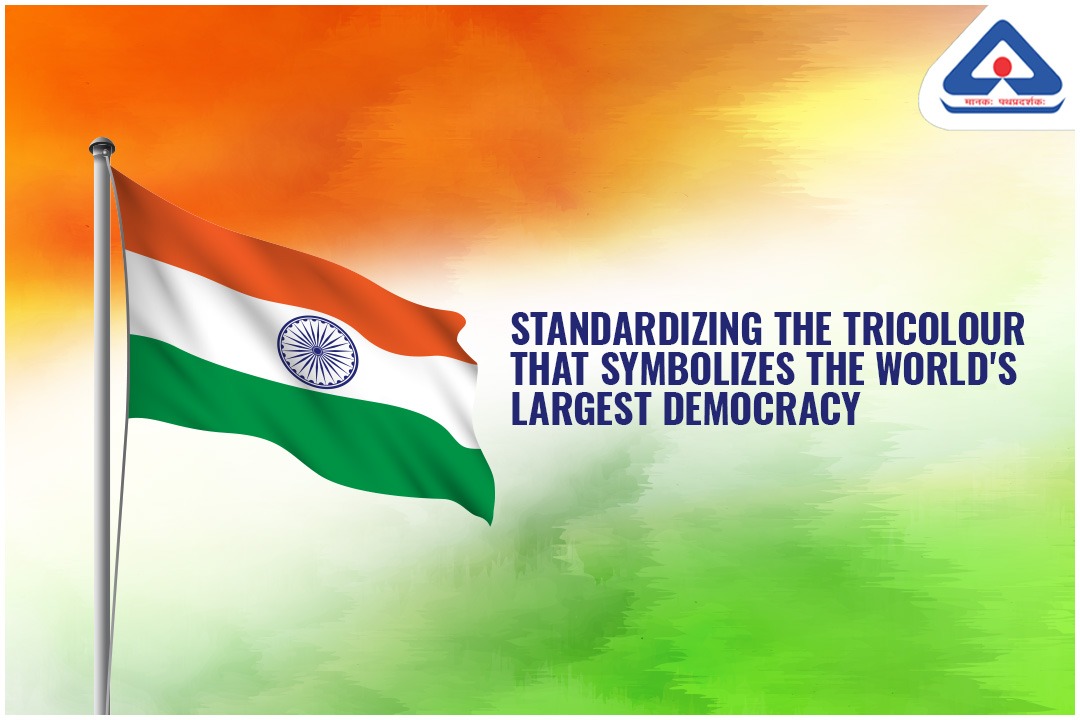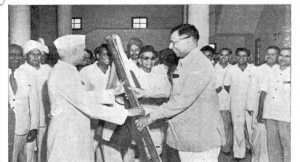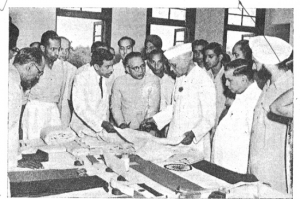

The National Flag of our nation is a symbol of great pride and unity instilling the spirit of patriotism in each & every Indian heart. However, the National Flag as we know it today has a history it’s own. The National Flag with the “Asoka Wheel” in the center, came into existence when two flags, one of silk and the other of cotton Khadi were presented to the Constituent Assembly of India by the Hon’ble Shri Jawahar Lal Nehru, the then Prime Minister of India on 22 July 1947. At the same time, he moved a resolution which was unanimously passed by the Assembly with all members standing:
“Resolved that the National Flag of India shall be a horizontal tricolor of deep saffron (Kesri), white and dark green in equal proportion. In the center of the white band, there shall be a wheel in Navy blue to represent the Chakra. The design of the wheel shall be that of the wheel (Chakra) which appears on the abacus of the Sarnath lion capital of Asoka.”
According to the resolution, though the design of the wheel is that of the Dharma Chakra of Emperor Asoka built in the third century BC, the wheel itself represents the Charkha (Spinning Wheel) which, along with the same three bands, as in the National Flag, constituted the original Tricolour Flag adopted in 1931 by the Indian National Congress during the struggle for Indian independence.
Significance:
The wheel as well as the colours of the three horizontal stripes of the flag have special significance. The wheel is a symbol of India’s ancient culture. It also represents the Charkha symbolizing the common man in India, our industry as emphasized by Mahatma Gandhi – The father of the Nation.
As for the three colours; their interpretation, when they were first adopted in 1931 by Indian National Congress is as follows:
Saffron for Courage and Sacrifice
White for Truth and Peace
Green for Fertility and Growth
Need for Standard Specification:
The broad specification of the National Flag, such as the colours of the three strips, design, position, the colour of the wheel and the ratio of the width to the length of the flag was prescribed in the official resolution passed by the Constituent Assembly of India on 22 July, 1947.
However, the resolution naturally did not furnish full details regarding the various sizes, quality of cloth and colours used and other particulars required for the manufacture of flags. Thus need was felt for a self-contained standard on the National Flag.
National Flag by Army Head Quarters:
The Army Head Quarters had issued a working drawing for the National Flag for the use of the Army and they suggested the same to the then Indian Standards Institution (Now Bureau of Indian Standards) to issue a standard for the National Flag on the basis of their requirements. The Government of India, in the meanwhile, expressed a desire that the cloth used for the manufacture of the flag meant for government use should be hand-spun and hand-woven cotton, woolen and silk fabrics.
The Standard Specification:
In line with this the Indian Standard Specification for the National Flag of India (Cotton Khadi) IS: 1-1951 was published in May 1951. It was finalized by National Flag Sectional Committee (TDC: 8) of ISI under the chairmanship of Shri Bharat Ram, Industrialist and Chairmen, Delhi Cloth & General Mills (DCM)
This standard described with illustrations, the general design and constructional details of the flag in full and prescribed the dimensions of the various parts of the flag, standardized to nine sizes including the one for motor cars.
This standard was subsequently revised in 1964 with a view to change the dimensions in metric system subsequent to its adoption by the Government of India. In the revised standard the details of yarns of warp and weft of cotton khadi bunting and of cotton khadi duck were deleted, the dimensions of hemp cordage and those of wooden toggles used for different sizes of flags and the pH value of the aqueous extract of bunting and tolerances on the dimensions of the flag and the Chakra were amended.
This Indian Standard was again revised in year 1968. In this revision, the method of attaching the panels of the flags and tolerances on the dimensions of the flag and the Chakra were amended.

The Flag of cotton khadi was presented to the then Prime Minister Shri Jawaharlal Nehru by Shri Hare Krushna Mahtab, the then Minister for Commerce and Industry, GOI and President of the ISI on 10th August 1951 at premises of ISI, housed then at Shri Ram Institute of Industrial Research, 19, University Road, Delhi. Standing among them are Dr. K.S Krishnan and Lala Sri Ram, the two then Vice-Presidents of the Institution.

The then Prime Minister examines textile materials used in making the “National Flag” as shown by Dr. Lal. C. Verman, the then Founder Director of ISI (Now Bureau of Indian Standards).
For the curious minds, the current version of this standard is available free of cost on our website at www.standardsbis.bsbegde.com.
Go Back